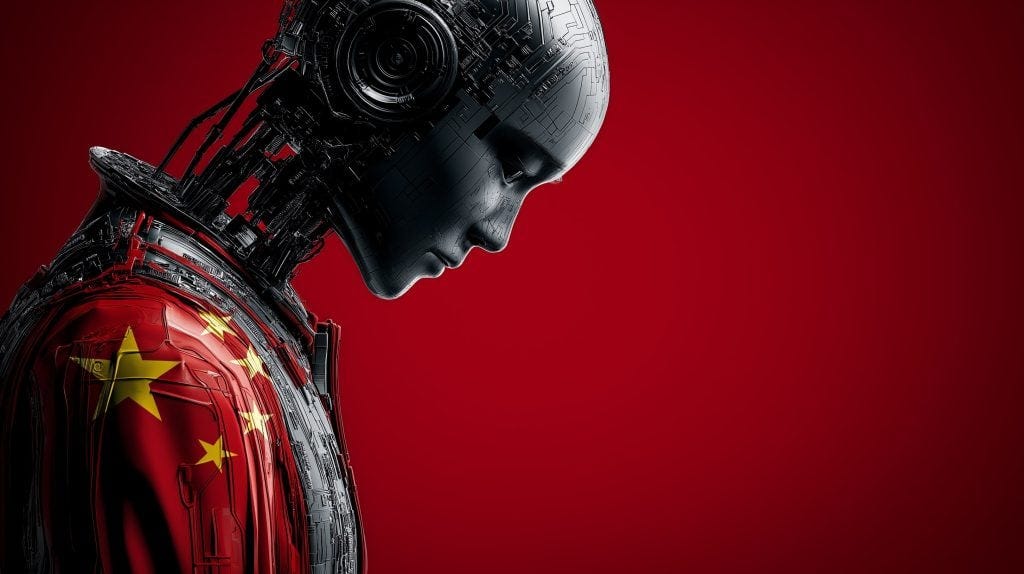🐉 The Dragon's Digital Roar: How China's AI is Redefining 'AI in the Wild'
Why Beijing’s AI Power Play Isn't Just About Scale—It’s About Seamless Integration into Daily Life
Welcome to Reem Tech Pro, where the future is often discussed, but sometimes the most impactful shifts are happening oceans away. While the West debates AI's philosophical implications, China is deploying AI with an unprecedented speed that’s quietly rewriting the rules of the game.
This isn't just about advanced models; it's about embedding AI into the very fabric of daily life and industry – from your hospital visits to the autonomous factories of tomorrow.
Want to understand how AI is truly transforming society, not just optimizing spreadsheets?
Grab our free guide: 15 AI Prompts That Save You 10+ Hours a Week.
🇨🇳 The Great Leap Forward: China’s AI Vision Beyond the Labs
China’s AI strategy isn't confined to whitepapers or research labs. It’s an ambitious national initiative to integrate artificial intelligence deeply into every aspect of its economy and society. The goal? To become the world leader in AI by 2030, and the recent advancements suggest they are well on their way.
Forget theoretical debates; think practical, ubiquitous application. From smart city infrastructure to advanced manufacturing, China is leveraging its vast data resources and rapid deployment capabilities to push AI into areas that directly impact its citizens and global influence.
💬 Reem’s Take: The West often focuses on frontier AI—the bleeding edge of models. China’s genius is in diffusion—taking existing or near-frontier tech and scaling it across industries at a speed that makes incumbents look like they’re standing still. This is where true societal transformation happens.
🤖🩺 Physical AI & Medical Miracles: AI Enters Your World
One of the most compelling narratives coming out of China this week is the acceleration of "physical AI." This isn't just about robots on assembly lines; it's about intelligent systems that interact with the physical world in increasingly sophisticated ways. Think advanced humanoid robotics, autonomous delivery systems, and smart infrastructure that self-optimizes. This means AI moving from the cloud to the streets, homes, and workplaces.
Perhaps even more impactful is the rapid integration of AI into healthcare. A groundbreaking example is Alibaba's DAMO Academy and Zhejiang Cancer Hospital’s AI model for early stomach cancer screening. This system analyzes routine CT scans to identify early-stage gastric tumors, dramatically improving detection rates in a 100,000-patient study. This isn't just a research paper; it's a real-world application poised to save lives, showing AI in its most impactful "wild" setting.
💬 Reem’s Take: While Western media might sensationalize AI's "threat," China is quietly demonstrating its profound utility. Early cancer detection isn’t a sci-fi dream; it’s a tangible, life-saving reality powered by AI, proving that real-world impact often trumps theoretical advancements.
⚖️ The Regulatory Tightrope: Governing a Digital Giant
Amidst this rapid deployment, China is also meticulously crafting its AI regulatory framework. The country has been an early mover in regulating generative AI, with interim measures from 2023 already setting baseline requirements. This month, new "Measures for Labeling AI-Generated Content" were announced, taking effect on September 1, 2025. These regulations aim to guide "safe and trustworthy" AI development, especially crucial given the potential for misuse.
Beijing’s approach is a fascinating blend of aggressive innovation and centralized control, aiming to foster growth while mitigating risks. This tightly controlled, yet fast-moving, regulatory environment creates both challenges and unique opportunities for businesses operating within or looking to enter the Chinese market.
💬 Reem’s Take: Don't mistake regulation for stagnation. China's top-down approach allows for swift policy implementation, which can actually accelerate responsible deployment by providing clear (if strict) guardrails. It's a different path to "safe AI," but potentially a faster one to broad adoption.
✅ Next Moves: What Executives and Innovators Should Do
For Tech Leaders: Focus on AI's "last mile" – how can your AI solutions be seamlessly integrated into physical environments and existing workflows? Think beyond software to embodied AI and real-world applications.
Keep reading with a 7-day free trial
Subscribe to Reem Tech Pro to keep reading this post and get 7 days of free access to the full post archives.


